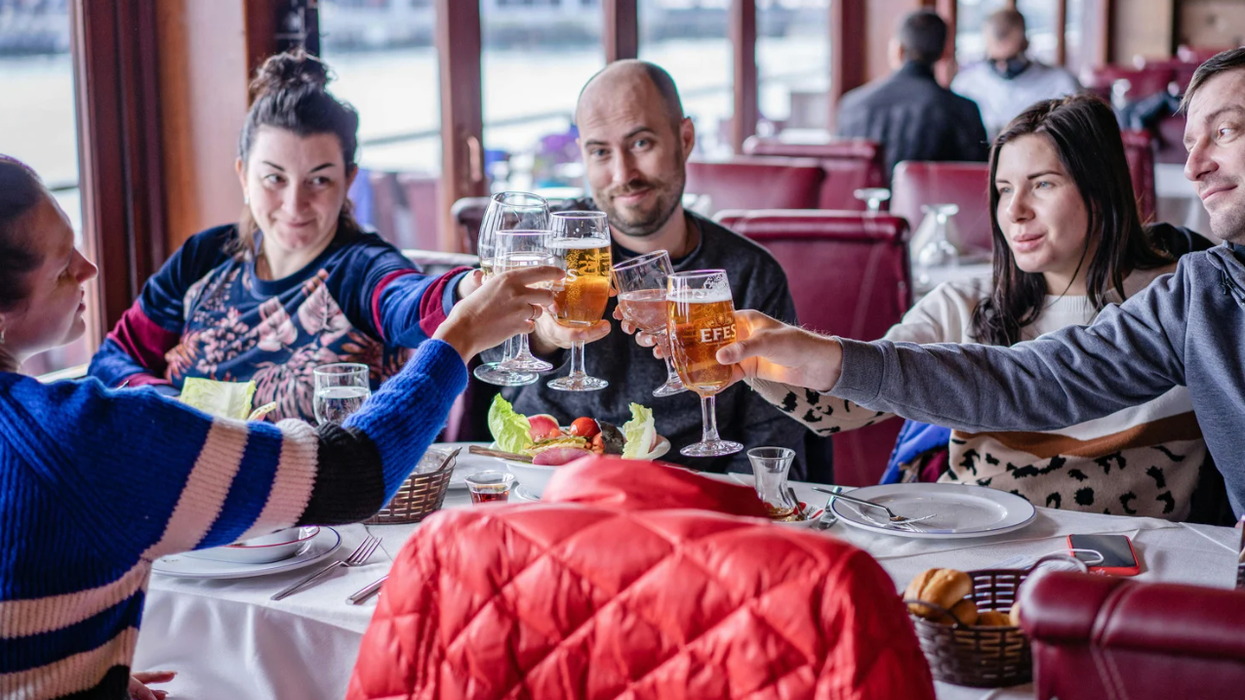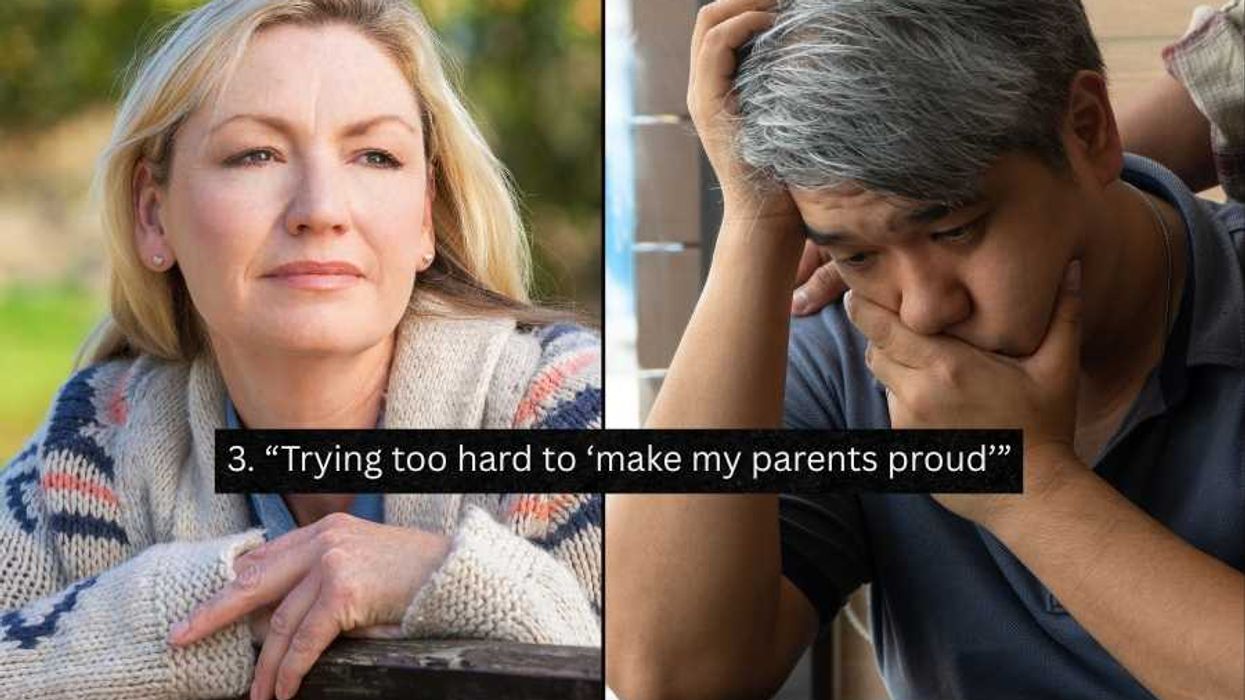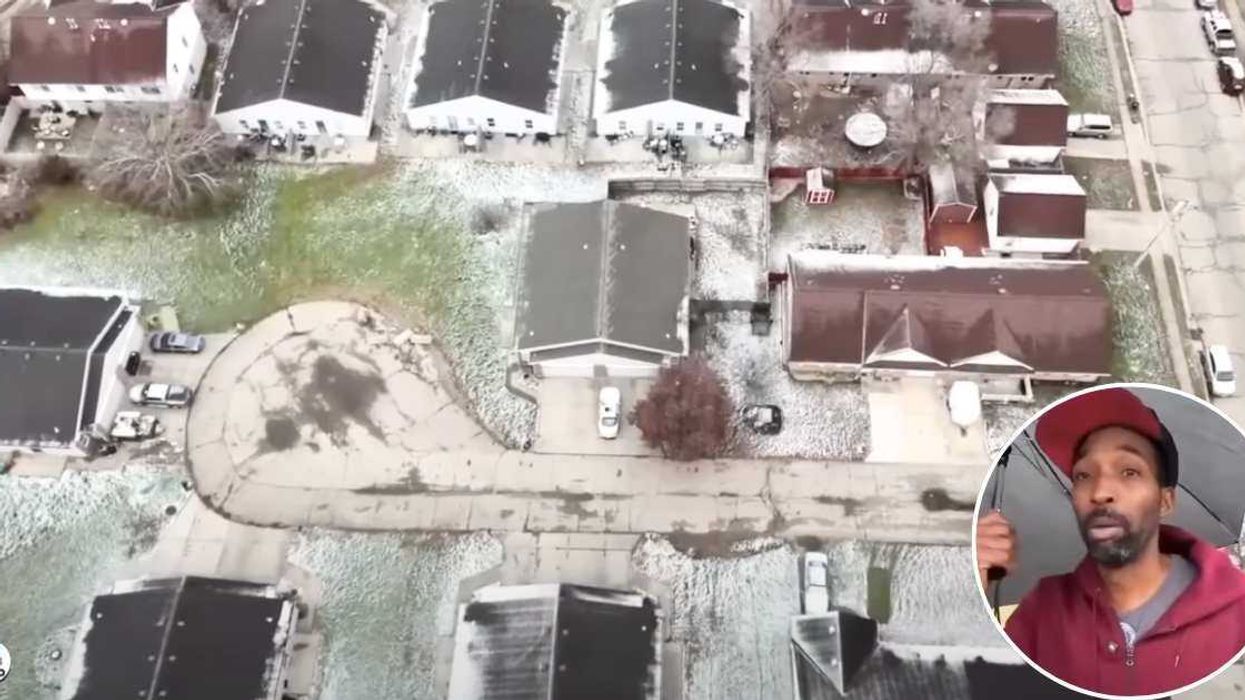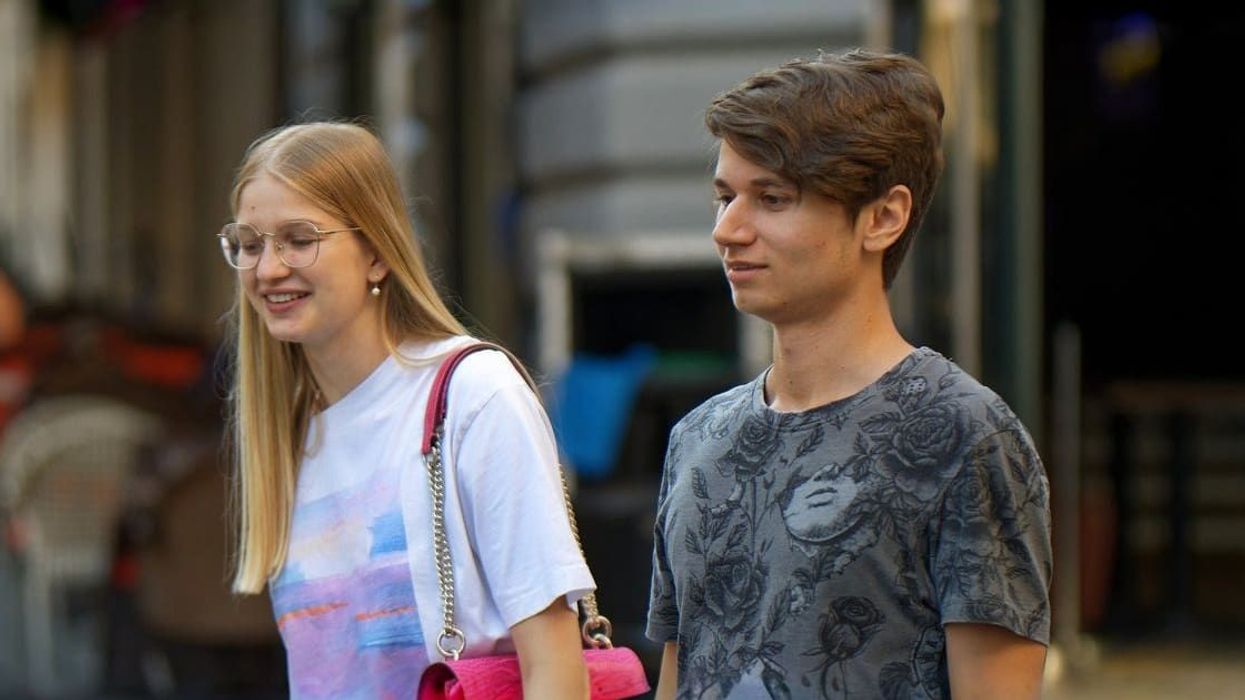If you find your way through the door of the Juan Bosco Shelter in Nogales, just across the border in Sonora, Mexico, it’s because you’ve got nowhere else to go. You’ll find a bed here, your own slot in one of the 30 trilevel wooden frames that line the walls. Chances are, you need the rest. And Juan Bosco provides. You can sleep now and figure things out in the morning.
The shelter has three cardinal rules: (1) Keep it clean. (2) Care for others. (3) "You can’t talk about polleros here," says a young man named José, using slang for guides who for a few thousand dollars bring immigrants over the border. "There are cameras and they hear the sounds." Most of the people settling into the bunks tonight were just deported. They aren’t talking much, anyway.
José once slept at this shelter when he had nowhere else to go. He was one of the nearly 55,000 people a year, 150 a day, that the Mexican government says are pushed off buses into Nogales by American authorities. Now José sleeps here every night because its owners have allowed him free board in exchange for work. "The shelter is like a family," he tells the new arrivals. "There are 3,000 people who come through here a month and we’re all equal."
Another man, José Fontes, climbs up to the top bunk he’s been assigned and places his small sack next to the wall. He lies down and rests his head on his hand so that his eyes are about level with mine from where I stand on the floor. Seven months ago he was stopped by local cops for a busted blinker on his car and then reported to immigration authorities because he’s not a U.S. citizen.
After seven months in detention, he was deported to Mexico, the country where he was born 42 years ago. "I haven’t been here in 25 years," he says. For more than two decades, his home has been Arizona. "It’s very, very important that I get back there. My daughter’s there, and my wife."
Below Fontes, in the middle bunk, a 17-year-old kid from Oaxaca is getting settled. His mother is in the women’s dorm down the hall.
I crouch down to the bottom bunk, where Gerardo Cardenas sits on his mattress, taking off his sneakers. "This place is nothing great, but it’s a hell of a lot better than where I was last night," he says in perfect English. He’s just come from a Border Patrol detention center in Tucson, Arizona, where he was locked in a cell that he says should have held 50 people but was packed with nearly 130. There was no room to lie down, so he only slept for a few stints, his head on another man’s shoulder. There wasn’t enough food—just two small, hard, cold burgers and two cups of juice a day. It "smelled like a barn." After four nights, he was loaded on a bus and dropped off here in Nogales, Sonora.
Five days earlier, Cardenas, who is 36 years old and dressed in jeans and beat-up running shoes, hired a pollero and walked through the desert with a group of 20 others. A Border Patrol helicopter hovered over them, raising a cloud of dust, and a guard on horseback chased them down. Some in the group ran for cover, but Cardenas was too tired to flee. He just waited for the border guard to arrest him. "Oh, you speak pretty good English," the guard said as he corralled Cardenas into a van.
Cardenas’s immigration woes began two years ago, when he hopped in his car to pick up some beer at the gas station three blocks from his apartment in Tacoma, Washington, and got himself arrested on a DUI. Cardenas, who has a wide smile that’s missing a tooth on the left side, was born in Mexico City, but he lived in the United States, mostly in Seattle and Tacoma, from the age of 10 on. He had a close-knit group of friends, got into some trouble from time to time, and never took things too seriously. He got by with roofing gigs, mostly for a local employer who always called him when there was work. Even though he wasn’t a U.S. citizen, he never thought about being deported. Washington was his home.
After his arrest, Cardenas was plucked from the county jail by Immigration and Customs Enforcement officers, who drove him to a Tacoma detention center. He didn’t get to say goodbye to his parents, siblings, or friends. He never got to see a lawyer—detainees have no right to representation—and after six weeks in a federal detention cell, he was loaded on a plane and flown to Arizona and then bused to the border.
In Mexico, Cardenas tried to put together a new life. But after nearly two years, he tells me, "It just got lonely here." His desperation grew last year when he got a call from his brother, who told him their mother had passed away. "After that I just needed to be back there." He decided to take his chances to get back to Tacoma. But the borderlands were swarming with patrols, helicopters, drones. Impenetrable.
And so Gerardo Cardenas finds himself with no friends, no job, and no prospects in a country that is supposedly his home. But he’ll worry about all that tomorrow. Now it’s time to sleep.
* * *
It’s about 8:30 in the morning, and after spending the night in the sleepy town of Nogales, Arizona, I’ve caught a ride across the border with a humanitarian aid group called No More Deaths. Trucks filled with cargo headed from the States to Mexico tower over our aging Honda Civic. The four volunteers—all in their 20s and 30s, white, and college-educated—will spend their days helping deportees recover their belongings from jails and detention centers, and offering them free cell phone calls to their families. Some of the volunteers will provide basic first aid—bandaging blisters and handing out Advil. The injured consider themselves lucky. "No More Deaths" refers to the hundreds of people who perish from dehydration or hypothermia in the desert each year.
We breeze through the checkpoint. A bus labeled "G4S Secure Solutions USA Inc.," the private security company formerly known as Wackenhut that has a contract to transport detainees, is pulled up on the U.S. side and a dozen men and women are lined up against a barrier. Each carries a clear plastic bag with the words "Homeland Security" printed on it. They were handed the bags when they were loaded on the contractor’s bus. Inside are the belongings they carried when they were detained—in one man’s bag: a cell phone, a list of phone numbers, $22.
A Border Patrol guard informs them they’re being deported, as if they haven’t figured that out by now, and then, gun in hand, follows the group up to the walkway entrance to Mexico. The men and women, and a few children clinging to their parents’ hands, walk beneath the overhang of the checkpoint plaza beside the crossing cars into the country where they were born.
On the Mexican side, the deportees are corralled into an office of the Instituto Nacional de Migración, which regulates migration in the country, where they’re handed reentry documents that serve as tickets to a frayed patchwork of services. They exit through a door on the other side of the building onto a Nogales street, next to a cluster of food carts and a bus ticket kiosk that reads "Servicios de Turismo: México, Puebla, Veracruz, Chiapas."
Nogales used to be a tourist trap, kind of a Tijuana lite. Visitors from Tucson and Phoenix would come for cheap beer and to peruse the ceramics and leather goods at the curios that line the streets near the border crossing. But in the last decade, as the headlines filled with news of drug violence in Mexico and the region swarmed with armed guards, the stream of tourists slowed to a trickle. Today Americans mostly come to buy cheap Cialis and Viagra, advertised on signs in the windows of the farmacías within sight of the border wall.
Before the wall was built, Ambos Nogales—"Both Nogales," as locals call it—was one city and families moved back and forth, first unencumbered and then through gaps in a chain-link fence. In the 1990s, the fence was replaced by a 12-foot corrugated metal wall. When I traveled to Nogales last year, the wall was covered in colorful murals and memorial crosses. Then the U.S. government tore it down and erected a new, higher wall. Now, there’s no way through, or over.
At the back of the group of deportees dropped off by the G4S bus is a man in a wheelchair and a neck brace. The man is tall and big boned, and the brace barely makes it around his neck. I get out of the car and hurry back toward the checkpoint to meet him as an INM officer wheels him inside. When I ask if he’ll talk with me, he moves only his eyes to look up at me and pushes a "No" out of his clenched jaw. The officer tells me that the man climbed the border wall—a row of 21-foot-high columns set several inches apart in concrete with a few feet of metal sheeting to stop climbers from getting a grip. When he reached the top he could not get a hold on one of the beams to climb down and plunged. His heavy frame lay in a heap in the Arizona dust until a Border Patrol truck passed by and hauled him up.
The rest of the group is gathered beside the ticket kiosk. These deportees are among the nearly 400,000 people removed annually by the Obama administration. Many lived for years in the United States and have just watched their ties to work and friends and family dissolve. Some have left behind children. Others in the group are more apt to call Mexico home. They were picked up after their first attempt to cross, or their second or third. One tall, smooth-skinned 17-year-old tells me he was bound for Brooklyn to join his father. "It is beautiful there," he tells me. "I’ve seen pictures and there are so many trees."
A No More Deaths survey found that nearly 70 percent of deportees the group met planned to try to cross again. Other deportees will board southbound buses to reunite with the families they only recently left. No matter which direction they’re headed, many pass at least a few days here in Nogales.
Some of the recent arrivals board a repainted school bus that takes them three quarters of a mile up the road from the border crossing. Across from a sprawling and colorful cemetery where deportees have been known to sleep when they’ve outstayed their welcome at one of the four shelters in town is the small Nogales office of Grupos Beta, an arm of the INM. Mostly, Grupos Beta staffers spend their days driving bright orange trucks along the barren parts of the border, looking for migrants who are lost or thirsty.
The Mexican government expends significant resources on its drug war, with a couple hundred million dollars earmarked by the U.S. Congress specifically for the Mexican military. Needless to say, Mexico gets no aid from its northern neighbor to support recently deported migrants, and the country has spent little of its own money to do so. Over the years as thousands of deportees have flooded the city, nonprofits and volunteers have filled the gaps in atrophied Mexican state services. Grupos Beta shares a patch of real estate with the Red Cross and a small, well-stocked medical clinic run by an American Jesuit organization called the Kino Border Initiative. Outside in a dusty courtyard, deportees wait in line to make calls to friends and family on phones borrowed from No More Deaths volunteers.
Another quarter mile down the road is the Transportes Fronterizos depot. The bus company has an agreement with the Mexican government to provide rides south for deportees. About 80 people are gathered in small groups under a corrugated metal lean-to, some sitting in old bucket seats and drinking coffee to keep warm. No buses are leaving today because it’s a federal holiday in Mexico, but the Americans don’t stop deporting immigrants for anything. There are twice as many people waiting as usual.
The company charges a few pesos for a shower and allows men to sleep in an aging blue trailer on the premises—a few women can sleep in a small room nearby—if they’ve bought tickets and are waiting a night or two before departure. Inside the trailer, it’s dark and dank and smells of bodies. There are enough thin, stained mattresses for about 35 people, but they fill up quickly. Dozens of men slept on the peeling linoleum floors last night.
Past the depot and up a steep incline is the comedor, a soup kitchen run by the Jesuits that provides meals for deportees. A line forms outside the chain-link fence that serves as the comedor’s outer wall. Many people ride here in vans from Juan Bosco, and others walk from the depot where they spent the night. They show their re-entry documents to a young priest-in-training with a smart-looking goatee who stands inside the gate that leads into the cafeteria.
It’s cold and unusually blustery. Dark clouds roll over, and large wet snowflakes start to fall. A young nun with a kind face and soft voice offers a prayer through a microphone and adds, "We do not agree with the suffering you’ve been through. We are here because we don’t believe you should suffer this discrimination and deprivation." A wind blows the snow through the chain-link fence, and a middle-aged man sitting at one of the packed tables yells, "The only thing missing is Santa Claus!" The nun waits for the laughter to settle before she continues reciting the words she repeats twice a day, every day of the year.
Gerardo Cardenas shows up in a van from Juan Bosco with a group of latecomers, and by the time he sits down there are more than a hundred people packed onto benches, which are segregated by gender. Cardenas tells me that he’s thinking about crossing back to the States tomorrow. The comedor sits just a few hundred yards from the Mariposa Port of Entry, the other border crossing in Nogales. "It’s right there, you know, it’s right fucking there. You walk up that hill and there it is."
In the States, Cardenas surrounded himself with a United Colors of Benetton cast of friends. Here, there’s one distant cousin in Mexico City, but he has not seen her since he was a toddler. "We might as well be strangers. I don’t have nobody," Cardenas says. Here, he says, "people look at me like I’m different."
According to an April report from the Pew Hispanic Center, Border Patrol apprehensions of unauthorized Mexican immigrants are at their lowest level since 1971. Last year, and every year since 2006, the U.S. government deported a record number of people to Mexico. It’s increasingly the case that undocumented immigrants are more deeply rooted in the United States than anywhere else. In late 2011, Pew estimated that nearly two-thirds of undocumented immigrants in the United States had lived there for at least a decade, and nearly half of undocumented adults have minor children. When they’re deported, years of life—family, community, the perks and responsibilities of established existence—beckon impossibly from the north. The border is more than a physical barrier; it’s a psychological torment.
Since he was first deported two years ago, Cardenas has traveled from one town to the next along the border looking for work and for a place to settle. He spent three months washing buses at a depot in Hermosillo, but his employer laid him off. He spent a month picking asparagus for $12 a day, but one morning he woke with such pain in his lower back that he could not move, and he was fired. His last job, unloading fish from boats in the tourist town of Puerto Peñasco, ended with the season.
Cardenas applied to be a waiter at a tourist restaurant. With tips, it would have been the highest-paying job he’d had in Mexico, and the manager was ready to hire Cardenas on the spot, thanks to his fluent English. But when the manager asked him for his ID, Cardenas had nothing to show. He’d lived in the United States since he was 10 and had no Mexican papers. The restaurant owner would not hire him.
"It’s like I’m illegal here, too," he says.
* * *
Cardenas heads to the Grupos Beta compound, where, with a borrowed cell phone from the No More Deaths volunteers, he calls his sister in Washington. "She said not to try to come back," he says, his voice low and sad. "She says it’s too dangerous and it’s not worth your life." Cardenas sits on a bench, elbows on his shins, rests his head against his fists and looks at the dirt.
One of the volunteers here was recently deported himself. Luis Luna, who is 20 and immigrated to the United States with his mother when he was 3, was sent back here six months ago after he was picked up in Washington state for a broken headlight. His first stop was Juarez, the city where he was born. There were no deportee shelters in Juarez, Luna says, so that first night he rented a room in a cheap motel. Thus began a negotiation with daily violence. When he woke the next morning and opened the door, Luna saw six bodies being lifted into bags. He saw people shot at in the streets and was robbed repeatedly. Masked federal cops would regularly pull their trucks over to the side of the road to harass him as he walked down the sidewalk, taking whatever money he carried and driving off.
After months of living like this, Luna hitchhiked 350 miles in the desert heat to Nogales, which he’d heard through a friend in the United States is a gentler place. He slept in the shelters and on the streets while he spent his days trying to get back across the border by hiding under freight trains. It didn’t work.
"I couldn’t get a job obviously ’cause I don’t have the right papers," says Luna. He started volunteering with No More Deaths because he had more in common with the young Americans than with anyone else he met in the city. And he says, "I don’t want people to go through what I went through. Some people come here and they don’t have anywhere to go."
These days Luna sleeps in a small $150-a-month one-bedroom apartment that some American friends help him pay for. He says he’s not sure how long they’ll keep supporting him, but he expects to be gone by the time the question comes up. He doesn’t talk much about how or when he might try to cross back into the United States. He does say, quite flatly, "This really isn’t my home and I really don’t plan to be here that long."
Luna is close friends with Kasha Bornstein, a college student from Massachusetts who’s here volunteering with No More Deaths. "People like him are like people I knew there," Luna says.
In the late afternoon, the three of us go to a pool hall near Luna’s apartment. The young men, only a year apart in age, have the same sense of style: skinny jeans and checkered shirts and tattoos; Bornstein did his own with ash and a safety pin, and Luna paid his for in a Nogales tattoo parlor. As they stumble through a bad game of pool, they gossip about the other volunteers. Luna complains that some of the service providers in town still treat him like an overstayed deportee rather than a volunteer. "If they first see you as a deportee that’s what you always are," he says. On the way out, Luna puts a peso into a slot machine up near the bar, and it spits out 20 pesos. "It’s my lucky day," he says, smiling.
It’s beginning to get dark, and Bornstein heads back over the border to Arizona where he’ll sleep in the No More Deaths volunteer house. Luna walks eight minutes up the road back to his dark apartment. He says it’s lonely there. His closet is filled with clothes his mother sent from Washington and a row of Nike and Converse sneakers. A small TV sits on a box. It’s attached to an Xbox that only sometimes works.
In the walkway between the apartments in Luna’s building is an open window. Through it, I see a row of crumbling adobe and brick homes and the border wall, which from here sinks into the landscape and rolls over the hills to the east. On the Arizona side, I can see houses atop a small hill. Straight out the window is the one where Bornstein spends the night. It’s right there.
"I try not to think about that too much," says Luna.
* * *
On my last day in Nogales, Luna wants to introduce me to Miguel, who helps deportees find jobs. His office is 15 minutes past the center of town on a smoggy thoroughfare lined with cell phone stores and discount clothing outlets.
Miguel is a small, clean-shaved man in a light green dress shirt and black slacks. He asks that I not use his last name or take his photo. Miguel was deported more than a year ago and now spends his time trying to help other deportees find a way to have "a full life, even if they’re a thousand miles from their real lives." I sit across from him at his desk in the back of an otherwise barren commercial space. Miguel pays rent with the proceeds from three hot dog stands he owns in Nogales and a landscaping business he co-owned in Georgia before he was deported.
"Deportees here are really alone," Miguel says. "They come here to this country that is supposed to be their home, and they think that because they speak English they’ll be fine. Well here, that’s not going to get you work," he says as he looks at Luna.
Miguel pulls a ledger out of a cabinet and shows me a list of about 40 people he’s placed in jobs since he started the project two months ago. A few work in the maquiladoras, the massive factory compounds that have sprung up as trade liberalization’s answer to Americans’ demand for cheaper goods. There are more than a hundred of them now in Nogales. Miguel found work for one man at Coca-Cola.
Long-term jobs are hard to come by. "I have a relationship with a brick-making company," Miguel says. "They say, 'Miguel send me someone for a few days, doesn’t matter if they have papers.'" But then a week later, those people are looking for work again. Stable employment requires an ID card.
The basic form of identification in Mexico is the voter ID card. Like a state ID or driver’s license in the United States, it’s what people use to prove they’re Mexican citizens to do things like rent an apartment or get a job. Since passports cost money and are somewhat difficult to obtain, most Mexicans rely on their credencial para votar. Many who’ve lived in the United States for long periods of time, like Luna and Cardenas, don’t have any Mexican identification. In fact, the voter ID cards were implemented in 1991, five years after Cardenas followed his parents to the north.
Deportees who do have a Mexican ID often have it confiscated by American immigration officials or the local jails where they are first detained. Though detainees are supposed to get their belongings back when they’re deported, they are transferred quickly from the jails to immigration detention centers hundreds or thousands of miles away. Their IDs stay behind, along with the rest of their possessions.
In an average month, No More Deaths volunteers recover from jails and detention centers about $1,000 in cash (dollars and pesos), 17 bags of belongings, and 16 pieces of ID. David Hill, a former linguistics Ph.D. student who now coordinates the property recovery project, tells me, "Many feel like they need to give me a reason why they need their property back, beyond it just being right and just. The first thing they say if they’re in Mexico is that they need their ID. They won’t mention their phones or things of monetary value, they’ll mention their ID because they can’t work without it."
These people are double-undocumented. They have worked and lived without papers north of the border, so they know how important that little card can be. And some don’t have any way to get papers once they’re back in Mexico. The Children’s Rights Information Network estimates that 30 percent of Mexican children under 5 don’t have birth certificates. When they grow up, those who migrate can’t prove their identity when they return. In 2009, a Oaxacan state agency reported that there were as many as 400,000 people from that state alone living in the United States without a Mexican birth certificate.
With few prospects, many deportees just stay in Nogales. "They don’t want to go back to where they’re from [in Mexico] because there’s no jobs there. That’s why they left in the first place," Luna says. "But there are some other people like me who stay here because there’s really not any place we could go besides here."
Later that day, Luna walks with me to the depot. The buses are running again. It’s warmed up and the sun is shining. A couple sits at a table under the lean-to. A parakeet in a cage squawks behind their heads as they talk about their 6-year-old daughter, who is in Atlanta. They’ve tried—and failed—three times to return to her. At the next table over, a 51-year-old man with a mustache and a paunch draws pictures of tropical birds with colored pencils.
In about 30 minutes, the bus will depart for the south. The couple will travel 36 hours south to Hidalgo. The older man isn’t getting on the bus. He was deported a month ago and, like Cardenas, has no family in Mexico. He’s convinced the owners of the bus depot to let him sleep in the trailer for a few extra weeks, maybe a month, in exchange for cleaning the bathrooms and painting the signs and gates.
A few dozen men and women, one carrying a small baby, gather around the bus. As it opens its doors, Cardenas runs into the depot. He’s out of breath. He bought a bus ticket back near the crossing, a mile away, and sprinted here.
Cardenas tells me he’s decided to go south to Mexico City to get his papers in order. "I am nervous but at least I can stay in a shelter there." With his ID in hand, he can return to the beach towns to find a job—and some Americans to talk to. Cardenas adds, "They were not going to let me stay at Juan Bosco anymore."
He is the last person on board. With just his small sack he steps up the stair and the door closes behind him. The bus pulls out of the lot and accelerates down the street. It’s headed south, but I doubt he’ll ever stop yearning to go north
Photos by Seth Freed Wessler
















 Otis knew before they did.
Otis knew before they did.